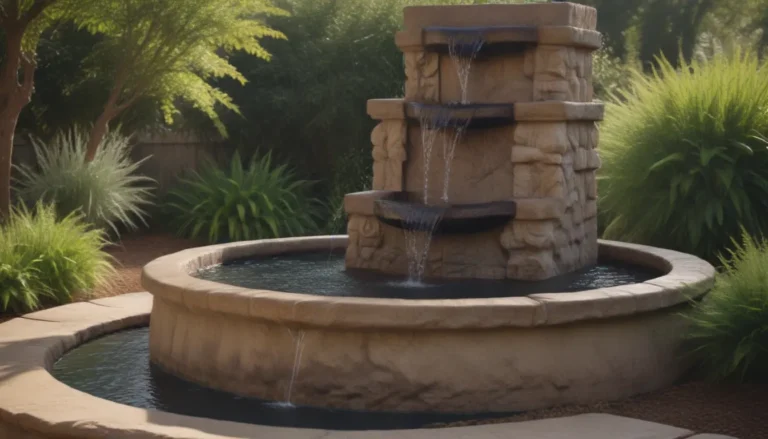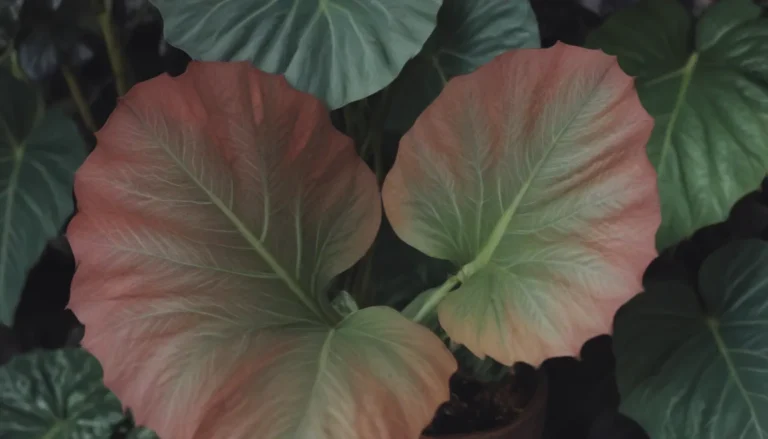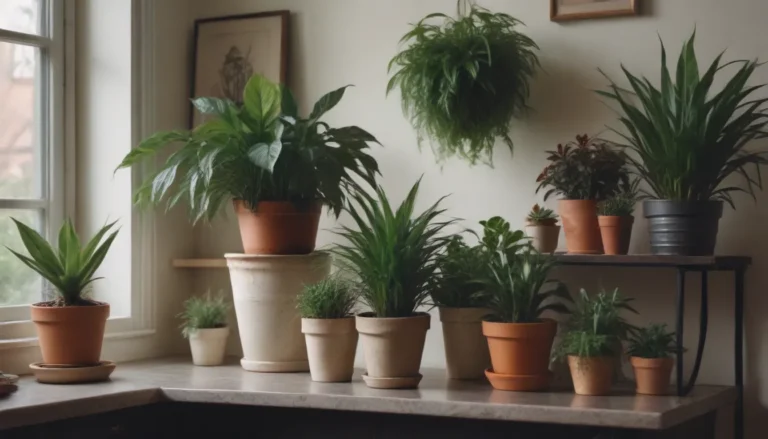Everything You Need to Know About Growing and Caring for Bee Balm

If you’re looking to add a splash of vibrant color and attract pollinators to your garden, bee balm is an excellent choice. Also known as bergamot, this native North American wildflower is a member of the Monarda genus and features distinctive “spiky hairdo” blooms. While bee balm is relatively easy to grow, there are certain care requirements you should be aware of to ensure your plants thrive. Let’s dive into everything you need to know about growing and caring for bee balm in your garden.
Bee Balm Care Essentials
Before you start growing bee balm in your garden, it’s essential to understand its care requirements. Here are the main aspects you should focus on to ensure your bee balm plants flourish:
Light
While bee balm can tolerate partial shade, it thrives best when it receives at least six hours of full sun daily. Too much shade can result in leggy growth and reduce the vibrancy of its blooms. However, if you live in a hot, dry climate, consider providing some afternoon shade to protect the plant from intense sunlight.
Soil
For optimal growth, plant your bee balm in rich, moist soil with a pH level of 6.0 to 7.0. Most garden soils are suitable for bee balm, but if your soil lacks nutrients, amend it with compost or manure to enhance its quality. Adding a layer of mulch around the plant can help retain moisture and keep the soil moist.
Water
Bee balm thrives in consistently damp soil, so be sure to water your plants regularly to prevent the soil from drying out. In the plant’s first year, maintaining a proper watering schedule is crucial for the establishment of a healthy root system. Aim to provide around 1 inch of water per week, watering at ground level to avoid wetting the foliage and minimize the risk of powdery mildew.
Temperature and Humidity
Bee balm is adaptable to various temperature and humidity conditions within USDA zones 3 to 9. It prefers dry atmospheric conditions, good air circulation, and water at ground level to reduce the risk of diseases. While bee balm can withstand extreme temperatures, high humidity can lead to disease issues, so ensure proper air circulation around the plants.
Fertilizer
While bee balm doesn’t require fertilization to thrive, you can apply a balanced 10-10-10 fertilizer in the spring to provide an additional nutrient boost. Avoid over-fertilizing, as this can reduce flowering. Follow the product instructions for the correct application rate to avoid any adverse effects on the plant.
Types of Bee Balm Cultivars
When selecting bee balm for your garden, you’ll come across various cultivars with unique characteristics. Here are some popular bee balm cultivars to consider:
- Monarda didyma ‘Jacob Cline’
- Monarda didyma ‘Pardon My Lavender’
- Monarda fistula ‘Claire Grace’
- Monarda ‘Scorpion’
- Monarda ‘Marshall’s Delight’
- Monarda ‘Vintage Wine’
- Monarda ‘Purple Lace’
- Monarda pringlei
- ‘Colrain Red’, ‘Raspberry Wine’, ‘Rose Queen’, ‘Rosy Purple’, ‘Violet Queen’
Each cultivar offers unique colors and growth habits, so choose one that suits your garden’s aesthetic.
Propagating Bee Balm
Propagating bee balm is relatively straightforward and can be done through division or cuttings. Division is the easiest method and helps maintain plant health and vigor. Here’s how you can propagate bee balm using division:
- Wait for new stems to emerge from the ground, signaling a good time for division.
- Using a shovel, carefully divide the plant into sections, ensuring each division has roots attached.
- Replant the divisions in moist, well-draining soil and water them thoroughly.
Alternatively, you can propagate bee balm through cuttings by following these steps:
- Take a healthy stem cutting with a pair of garden snips.
- Dip the cut end in rooting hormone and plant it in a small pot filled with rich soil.
- Place a plastic bag over the pot and secure it with a rubber band to create a mini greenhouse.
- Keep the cutting in a warm, bright location and mist it regularly until roots develop.
How to Grow Bee Balm From Seed
Starting bee balm from seed requires patience and a bit of planning. Here’s how you can grow bee balm from seed:
- Harvest bee balm seeds from dried flower heads in the fall.
- Cold stratify the seeds by storing them in a cold location for a period before planting.
- Sow the seeds in a well-draining seed starting mix and keep them moist until germination occurs.
By following these steps, you can grow bee balm from seed and enjoy beautiful blooms in your garden.
Potting and Repotting Bee Balm
While bee balm is typically grown in the ground, it can also thrive in containers under the right conditions. Here’s how you can pot and repot bee balm plants:
- Choose a large container with adequate drainage holes and fill it with a well-draining potting mix blended with compost.
- Plant the bee balm in the center of the pot, ensuring the roots are covered but not submerged.
- Place the pot in a sunny location and water the plant when the top inch of soil feels dry.
- For overwintering, move potted bee balm to a sheltered location to protect it from extreme weather conditions.
Regular repotting or division is necessary for potted bee balm to prevent it from becoming root-bound and promote healthy growth.
Overwintering Bee Balm
As the fall season approaches, it’s essential to prepare your bee balm plants for winter. Here’s how you can overwinter bee balm:
- After frost kills the plants, cut back all stems to about 2 inches from the ground.
- Dispose of any debris to prevent the spread of fungal spores.
- In regions with extremely cold winters, consider mulching the crown to protect the roots from freeze-thaw cycles.
By taking these steps, you can help your bee balm plants survive the winter and return with vigor in the spring.
Common Pests and Plant Diseases
While bee balm is relatively resistant to pests, it can still be affected by minor infestations and diseases. Here are some common pests and diseases that may affect bee balm:
- Spider mites: These tiny pests can suck the plant’s juices, leading to discoloration and wilting.
- Aphids: These small insects can cluster on new growth and distort plant tissue.
- Powdery mildew: A fungal disease that forms a powdery white or gray residue on leaves and buds.
- Rust fungus: A disease that can disfigure the leaves of bee balm.
To prevent and manage these issues, ensure good air circulation around the plants, avoid overhead watering, and prune away affected foliage. Consider using fungicides or home remedies to control fungal diseases and maintain plant health.
How to Get Bee Balm to Bloom
Bee balm is prized for its vibrant flowers, and with proper care, you can encourage abundant blooms in your garden. Here are some tips to help your bee balm thrive and bloom:
- Duration of Blooms: Most bee balm varieties bloom for eight weeks or more, starting in midsummer and continuing into fall.
- Appearance and Aroma: Bee balm produces hairy clusters of colorful tubular petals with a hint of mint or other aromatic scents.
- Encouraging Bloom: Deadhead flowers after blooming to promote repeat flowering and prevent self-seeding. Dividing older plants every few years can also stimulate new growth and blooms.
By following these tips, you can enjoy a profusion of colorful blooms from your bee balm plants throughout the growing season.
Common Problems With Bee Balm
While bee balm is a relatively low-maintenance plant, it can face a few challenges that may impact its appearance and health. Here are some common problems you may encounter with bee balm:
- Leggy Growth: To prevent leggy growth, position bee balm plants where foliage is partially concealed while maintaining good air circulation.
- Powdery Mildew: This fungal disease can affect bee balm, especially in humid conditions. Prune affected foliage, maintain proper ventilation, and consider fungicide treatments to control mildew.
By addressing these issues promptly and providing proper care, you can help your bee balm plants thrive and remain healthy throughout the growing season.
Conclusion
Growing and caring for bee balm in your garden can add a burst of color and attract pollinators, making it a rewarding plant to cultivate. By following the essential care tips outlined in this guide, you can ensure your bee balm plants thrive and produce an abundance of vibrant blooms. Whether you’re a novice gardener or a seasoned horticulturist, bee balm is a versatile and beautiful addition to any garden. With proper care and attention, your bee balm plants will reward you with stunning flowers and lush foliage season after season. Happy gardening!




